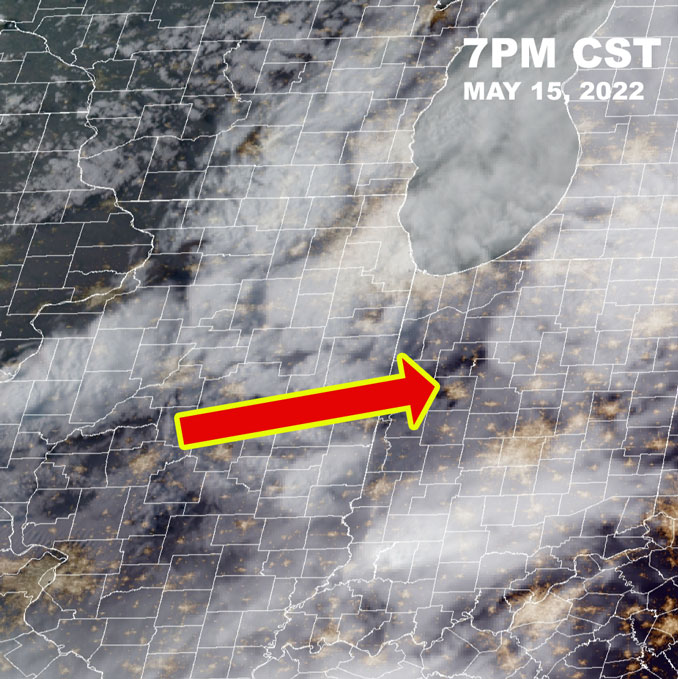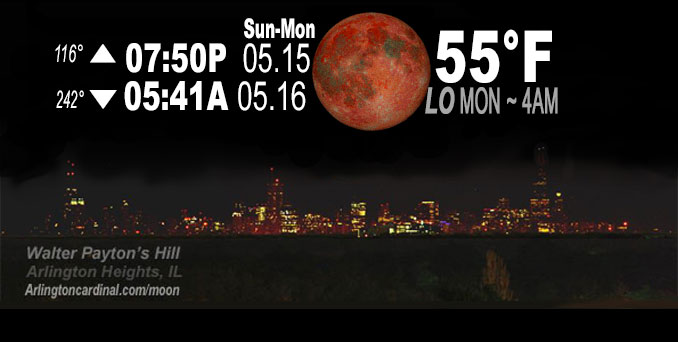
The latter half of the the Total Lunar Eclipse over Chicagoland is more promising than the first half. However the latest satellite images show that cloud conditions may be better than initially expected for good observations of the Total Lunar Eclipse. Cloudy conditions persisted all day, but the NOAA GOES-East – Sector view: Great Lakes – GeoColor image shows the trailing edge of clouds east of the Mississippi River with clear skies coming our way.
Cloud cover is forecast to be about 80 percent when the Total Lunar Eclipse begins about 8:30 p.m. Sunday, May 15, 2022. As the Total Lunar Eclipse progresses, cloud cover is expected to decrease as cloud cover departs and moves from west to east.
By the time the Moon turns completely blood red at about 10:30 p.m., cloud cover is forecast to be about 60 to 70 percent. However, the satellite image at 7:55 p.m. Sunday shows that cloud cover conditions may be less than 30 percent.
The altitude of the Moon will only be about 24° in the east at Maximum Eclipse. In order for the Moon to be visible during the eclipse, the Moon will need to be elevated above the departing clouds in the east sky. Unfortunately, even though skies may be clear overhead, the beginning of the eclipse as the Moon rises above the east horizon won’t be visible because of clouds on the east horizon.
Hopefully, the departing clouds will be clear by the time the Total Lunar Eclipse reaches maximum.

The total eclipse event begins about 8:32 p.m. Sunday.
The partial eclipse begins about 9:27 p.m.
The full or total eclipse begins about 10:29 p.m.
The maximum total eclipse is about 11:11 p.m. Sunday.
The full or total eclipse will end about 11:53 p.m. Sunday.
The partial eclipse will end about 12:55 a.m. Monday.
The earth’s shadow will completely depart the Moon about 1:50 a.m. Monday.
Go outside with NASA and watch the total lunar eclipse! On the evening of May 15, Earth will pass between the Sun and the Moon, blocking sunlight and casting a shadow on the lunar surface. Starting at 9:32 p.m. EDT (1:32 UTC on May 16), people with clear skies in the Americas, Europe, and parts of Africa will begin to see the Moon get bathed in the red glow of every sunrise and sunset refracted through Earth’s atmosphere. Totality will occur at 12:12 a.m. EDT on May 16 (4:12 UTC). YouTube Tips ⓘ
